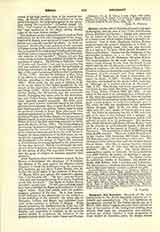

Emesa, a titular see of Phoenicia Secunda, suffragan of Damascus, and the seat of two Uniat archdioceses (Greek Melchite and Syrian). Emesa was renowned for its temple of the sun, adored here in the shape of a black stone, whose priests formed a powerful aristocracy. One of them, Bassianus, became Roman emperor under the name of Elagabalus (A.D. 218). A native Arab dynasty ruled over the city between 65 B.C. and A.D. 73, from which period the series of Emesa coins dates. Emesa was the birthplace of the philosopher Longinus (c. A.D. 210), the friend of Queen Zenobia, and St. Romanos, the great Byzantine hymnographer (in the sixth century). Among twelve Greek bishops, known from the fourth to the eighth century, are: St. Silvanus, a martyr under Maximinus in company with the physician Julian (c. 312); Eusebius, a famous rhetorician suspected of Arianism; Nemesius (fourth century) and Paul, writers and friends of St. Basil and St. Cyril of Alexandria (Lequien, Or. christ., II, 837). Another, whose name is unknown, was burned by the Arabs in 666 (Lammens in “Melanges de la faculte orientale de Beyrouth”, 1906, 3-14). The diocese was never suppressed and still exists for the Greek Melchites, both non-Catholic and Uniat (Echos d’Orient, 1907, 223, 226). It was raised to the rank of an autocephalous archbishopric in 452, when the supposed head of St. John the Baptist was found at the monastery of the Spelaeon, and it was made a metropolitan see with four suffragan sees in 761, when the relic was transferred to the cathedral (Echos d’Orient, 1907, 93-96, 142, 368). Sozomen (Hist. eccl., III, xvii) speaks of this church as a marvel; the Arabs on capturing the city in 636 took over half of it; later it was changed into a mosque. In 1110 Emesa was taken by the Crusaders, and in 1157 suffered severely from an earthquake. The modern city, which the Arabs call Horns (Hems, Hums), built on the Orontes in sand-colored basalt, is the chief town of a caza, in the sanjak of Hamah, vilayet of Damascus. The population is about 50,000 including some 30,000 weavers. There are 33,000 Mussulmans, 14,500 Greeks, 1000 Jacobites, 500 Greek Catholics, 350 Maronites, and a few Catholics of other rites. The Orthodox Greek metropolitan and the Jacobite bishop live at Horns. (For lists of ancient Jacobite bishops see Lequien, op. cit., II, 1141, and “Revue de l’Orient chrétien”, 1901, 196, 199.) The Greek Melchite metropolitan resides at Iabroud; he has jurisdiction over 8000 faithful, 20 priests, 12 churches, 7 schools, and 2 monasteries of Shooerites. The Syrian Catholic archbishop resides at Damascus; his diocese includes 2000 faithful, with 4 parishes and 5 churches. The Jesuits have a residence and school at Homs, and native Mariamet Sisters conduct a school for girls.
S. VAILHÉ

